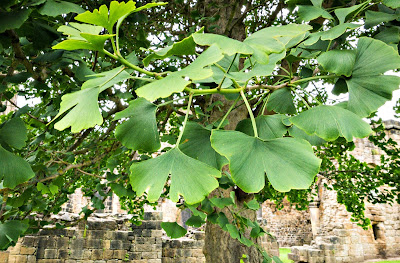Kirkstall Abbey, Leeds
Medieval magnificence
Imagine the lives of Cistercian monks 800 years ago, walking through the cloisters to their church in the early hours of the morning or simply in quiet contemplation within the chapter house. This is surprisingly easy to do on a visit to Kirkstall Abbey. The building was started in 1152 and the abbey owned the largest amount of land in and around Leeds in the middle ages. The monks and the abbey prospered over the centuries until Henry VIII's dissolution of the monastries which closed Kirkstall Abbey in 1539. |
| Kirkstall Abbey |
The ruin of the abbey is now in the care of Leeds city council and is open to everyone to visit (for free) and enjoy it's impressive architecture and the parkland surrounding it alongside the River Aire. It is situated just north of Leeds city centre.
 |
| Inside Kirkstall Abbey |
Wandering though the ruins there are notices explaining what each room used to be and how it was used. Vaulted ceilings have now gone but the posts in the walls that supported them can still be seen and you can let your imagination work the magic of reconstruction.
The Yorkshire stone has darkened through the years but in some sheltered places it still glows golden.
 |
| Yorkshire stone |
The Abbot's room overlooked the garden which was planted with a Ginko Biloba tree, used for its health benefits. There is still such a tree planted there and it has attractive wide curvy leaves of a bright green colour.
 |
| Ginko Biloba tree |
The Visitor Centre provides information about what life would have been like in the abbey with plenty of appropriate books, pictures and gifts to buy. Also there are often markets held in the cloisters. On the day we visited there was an Art Trail in place with a wide variety of styles displayed, including some fine photography, with pictures and cards for sale.
 |
| Art Trail - photography on display in the abbey |
 |
| Looking into the Art display from outside |
Across the road from the abbey there is the Abbey House Museum with its Gatehouse Cafe set in a 12th century hall with a vaulted ceiling. An excellent place for a cup of tea after your medieval encounter.


Comments
Post a Comment